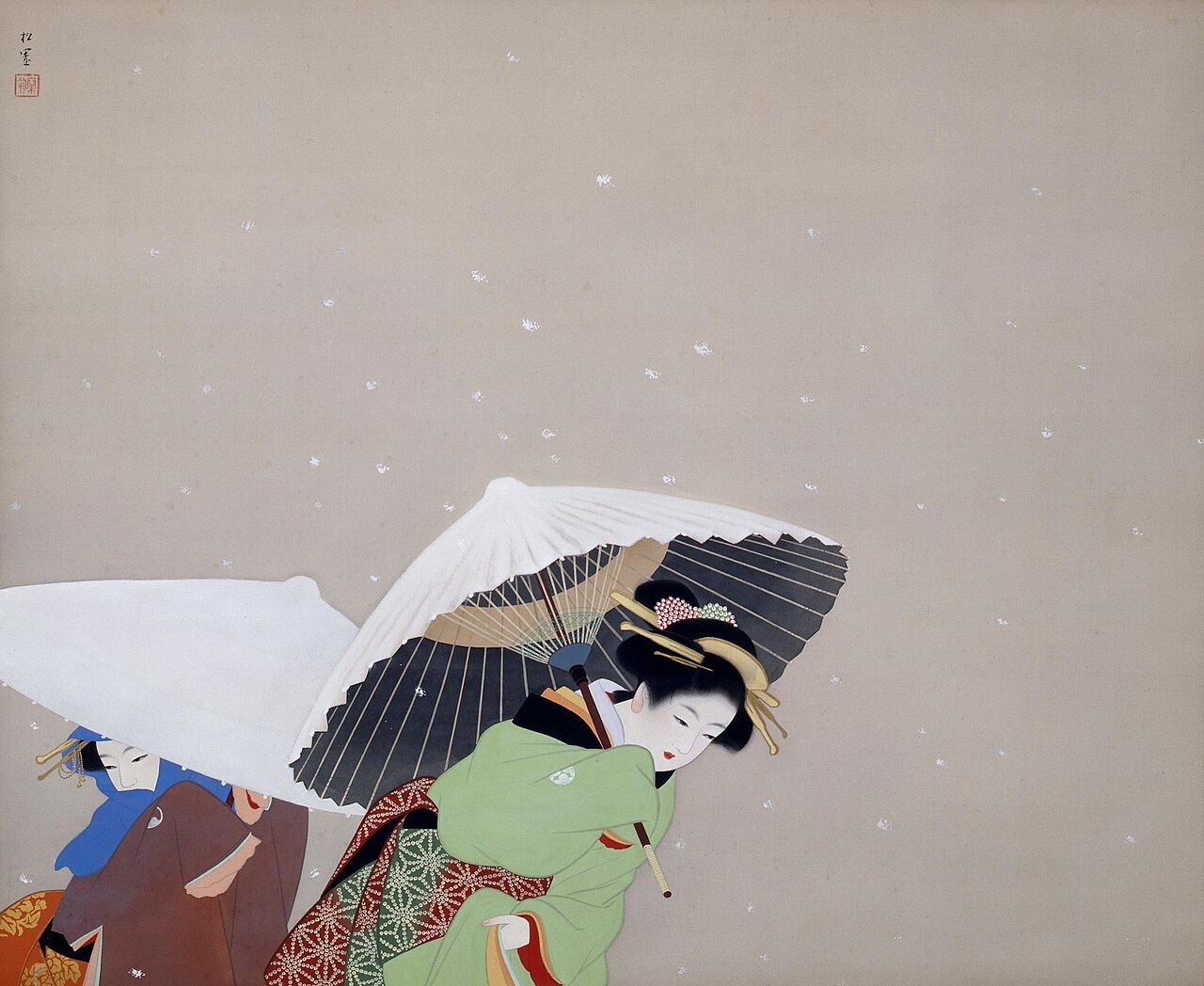15.牡丹雪(Peony Snow)
日本画特有の「間(ま)」の美学を活かした作品

《牡丹雪》は、1944年に描かれた晩年期の作品。戦時下の緊張感漂う時代にあっても、松園は一貫して「清澄で卑俗なところのない美」を追求し、本作はその理念を体現した静謐な傑作である。牡丹雪が降りしきる中、傘を差して歩く二人の女性。画面左下に人物を寄せ、広大な余白に雪を描く大胆な構図が特徴である。鶯色や淡紅色の着物に繊細な文様が施され、雪の白との対比で色彩が際立つ。傘に積もる雪の重みを感じさせる手の表現や、足元の動きから、寒さと急ぎ足の様子が伝わってくる。牡丹雪は大粒で湿り気があり、空気の重さや静けさを演出。人物を画面の隅に配置し、雪の空間を広く取ることで、視覚的な緊張と余韻を生み出している。傘に積もる雪の重みや、女性の所作に込められた感情を読み取ると、画面の静けさの中に物語が浮かび上がる。松園が理想とした「香高い珠玉のような絵」が、色彩・構図・精神性のすべてに宿っている作品である。
Peony Snow (1944)
A piece embodying the Japanese aesthetic of “ma” (spatial pause)
Painted in 1944 during the final years of Shōen Uemura’s career, Peony Snow reflects her unwavering pursuit of “pure, untainted beauty” even amid the tensions of wartime. The work portrays two women walking under umbrellas as large, moist snowflakes—known as botan-yuki—fall around them.
The figures are placed in the lower left corner, while the vast expanse of snow occupies the rest of the canvas. The women’s kimonos, in olive green and pale pink, are adorned with delicate patterns that contrast vividly against the whiteness of the snow.
The weight of snow accumulating on the umbrellas is subtly conveyed through the women’s hand gestures and steps, evoking both the chill of winter and a sense of hurriedness. The large, damp snowflakes enhance the quiet density of the air, while the generous use of negative space amplifies the emotional resonance.
Uemura invites viewers to read into the women’s movements and emotions, revealing a quiet narrative within the stillness. This work fully embodies her ideal of a “fragrant, jewel-like painting,” where color, composition, and spiritual depth converge in harmony.
お問い合わせ
〒154-0024 東京都世田谷区三軒茶屋1-39-7